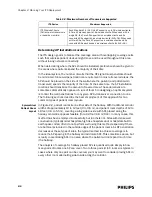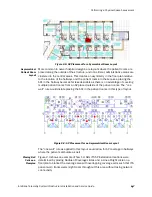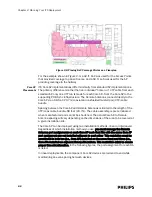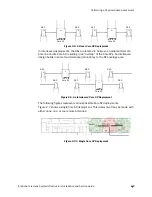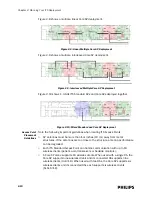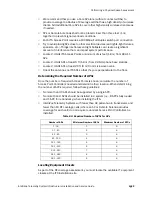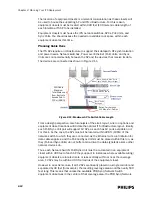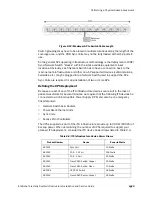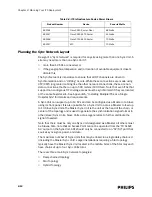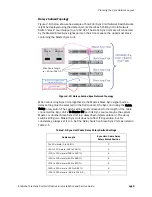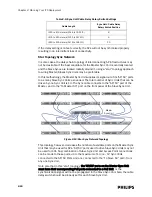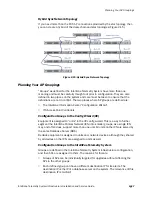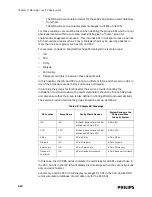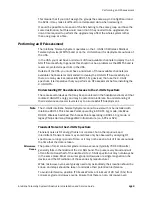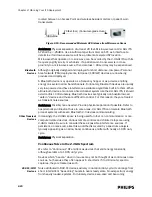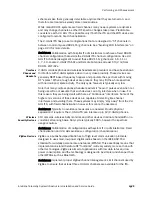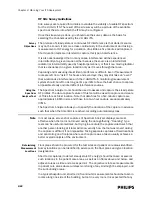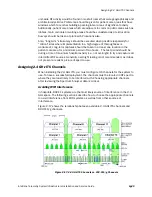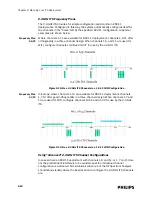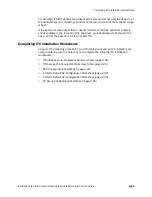
2-20
Chapter 2: Planning Your ITS Deployment
located between an Access Point and wireless beside monitors or patient-worn
transceivers.
Avoidance: Physical separation of at least 20 feet. Microwave level at 2.4 GHz ITS
AP shall be < -25dBm. Use insufficient spectrum alert on APC web interface to
determine if microwave source will be a problem at selected AP location.
Microwaves that operate on ½ sine wave can be avoided by the 2.4 GHz ITS with its
frequency agility & retry mechanism. If a patient-worn transceiver is in close
proximity to a microwave source, then data loss > 90sec/day may be experienced.
Bluetooth
Devices
Although originally designed and deployed for short distance, low power Personal
Area Network (PAN) deployments, full power (100mW) devices are now being
produced and deployed.
A Bluetooth device may operate as a frequency hopper or as a device emitting
energy on several narrow band channels. Fortunately, Bluetooth devices are usually
very low powered and have interference avoidance algorithms built into them. When
a Bluetooth device encounters a fixed channel system like the 2.4 GHz ITS, it should
avoid conflict. Unfortunately, Bluetooth devices are typically non-hospital owned
“walk-in” devices and thus are difficult to control. For this reason, they are treated
as transient noise sources.
Avoidance: Possibly none needed. Provide physical separation if possible. Refer to
hospital policy on Bluetooth use in care areas. 2.4 GHz ITS can tolerate Bluetooth
piconet systems with seven Bluetooth 2.0 devices communicating.
Other Transient
Devices
Increasingly, the 2.4GHz space is being used for other non-communication or non-
computer related devices. Various remote controls and children's toys are using
2.4GHz radios. Be sure to consider these as possible interference sources. If
persistent, a noise source like this would be discovered by a spectrum analysis,
typically appearing as a narrow band, continuous emitter with nearly a 100% duty
cycle.
Avoidance: Physical separation.
Continuous Noise in the 2.4 GHz Spectrum
We refer to “Continuous” RF emitters as devices that emit energy constantly,
although seldom at a 100% duty cycle.
Devices which “beacon” when in low use may not be thought of as continuous noise
sources, but because they often appear in short-term (5 to 20 minute) spectra
captures, they are treated as such.
802.11/WiFi
Devices
Noise attributed to 802.11 devices will vary in duration/duty cycle. It can range from
short, intermittent “beaconing” bursts to near steady state, broad spectrum energy
from heavily loaded, systems. Fortunately, device keep-alive and beaconing
Figure 2-16: Recommended Minimum AP Distance from Microwave Ovens
20 feet (6 m) (Consumer-grade Oven)
Summary of Contents for IntelliVue Telemetry System Infrastructure
Page 8: ...viii Contents ...
Page 14: ...xiv About This Guide ...
Page 100: ...3 22 Chapter 3 Installing and Configuring the ITS Figure 3 10 APC Filter Configuration Screen ...
Page 162: ...5 12 Chapter 5 Troubleshooting and Testing ...
Page 168: ...A 6 Chapter A Installing Multiple ITSs at a Single Hospital Site ...
Page 180: ...Index 8 Index ...

